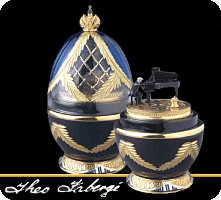
by Frank Daykin, June 29, 2016
Language has become so debased in our time, words no longer seem to mean what they once did, but one thing I can guarantee; an hour spent with duo-pianists Melvin Stecher and Norman Horowitz reveal them to be gentlemen, in the truest sense of the word. These dapper men have more energy than most people one-quarter their age. Their manners are impeccable, and their nurturing musical philosophy has kept them and their students going for decades. Their transformation from one of the world’s leading piano duos (five decades) to educators (four decades) to philanthropists (two decades) is dazzling.
They never said “no” to anything, beginning back in their post-student days as a touring two-piano team. Whether it was an engagement in an unlikely and extremely remote area, hauling the two concert grand pianos in a succession of vans and custom-built trucks, the unloading of said pianos, each weighing close to 1000 pounds, nearly freezing to death in the unheated cab of their truck during winter, innumerable vehicle breakdowns, etc, they displayed an unbelievable work ethic. They attended every single scheduled social event pre- or post-concert, with the result being reengagement, the “gold standard” for any group, and they functioned during the heyday of the Community Concerts series of Columbia Artists Management. As duo-pianists they did not shun appearing in cocktail bars with popular repertoire, while the very same men commissioned and premiered the Walter Piston Concerto for Two Pianos and Orchestra, a landmark in the twentieth century American two-piano literature.
While on a groundbreaking tour of Central and South America with the Roger Wagner Chorale, a near-fatal medical emergency caused them to consider a new strategy. That, and memories of experiences at summer music camps for children inspired the opening of the Stecher and Horowitz School of the Arts in Cedarhurst, Long Island, which had 500 students and a faculty of 25. Their hands-on style resulted in yet another seemingly incredible nurturing environment where young musically talented children could pursue lessons with the confidence that they would be given the best lessons and extras available from a faculty that shared the values of the founders.
Then came the evolution of the New York International Piano Competition, first held in 2002 (biennial), which has become known as the “no-elimination” competition. If one is selected to participate as an accepted contestant, it is because he or she belongs there. Everyone receives a finalist cash award of $1000 (if not awarded one of the top seven prizes) and career guidance and mentoring. This has created such a fund of goodwill that past participants often come to New York just to attend the subsequent competitions and to see their “musical fathers” again.
This year’s competition is being held at the Manhattan School of Music from June 20 to 24; it is open to the public free of charge (with the slight exception of the closing ceremonies). I myself have witnessed the duo’s expertise with high-tech videos submitted and played back for judgment by Stecher and Horowitz and the Screening Jury. The contestants make four short videos, one for each required repertoire category: Bach, classical period, romantic period, and one Chopin etude. From over 150 received, Stecher and Horowitz reduce the number to 40, at which point a “screening jury” is called in: this year 22 finalists will be playing in person. They all submit a handwritten letter to Stecher and Horowitz about themselves, which reveals a great deal, even in those whose first language is not English, always the personal touch.
Each of the contestants gets to program two 25-minute recitals, during which they are not stopped with the traditional (and soul-killing) “Thank you very much,” etc. There is a concerto round (with second piano accompaniment). They also all must prepare two four-hand works, with a partner they don’t meet until they get there: this year’s repertoire is the delightful Gazebo Dances by John Corigliano and Mozart’s Sonata in C Major, K. 521, first movement. AND they all must play from memory (on one of the two recital programs) the newly commissioned work: Two Impromptus by Lowell Liebermann, which they receive only ten weeks prior to the competition (!). The score contains such delights as 11 against 5 in the same hand, but these challenges will undoubtedly be more than met.
The jury itself is composed of the highest quality pianists from all over the world not members of the “factory” conservatory approach to producing musicians; and none of them are allowed to have a student in the competition, so the integrity is unimpeachable. This year’s jury includes: Tong-Il Han, Ian Hobson, Orli Shaham, Jane Coop, Jeffrey Swann, and Erik T. Tawaststjerna.
In past seasons, even non “first” prize winners have gone on to give major concerto appearances and other recitals, as a direct result of the supportive climate (and realistic advice about careers and repertoire) created by the two gentlemen. One thing they noted fondly was that the more recent generations no longer sneer at advanced degrees in music education, which offers a more reliable career, and one in which their nurtured backgrounds may lead them to be even more effective stewards of future musicians.
You really need to share in the atmosphere of this endeavor, and support your favorite players. You won’t soon forget it!



